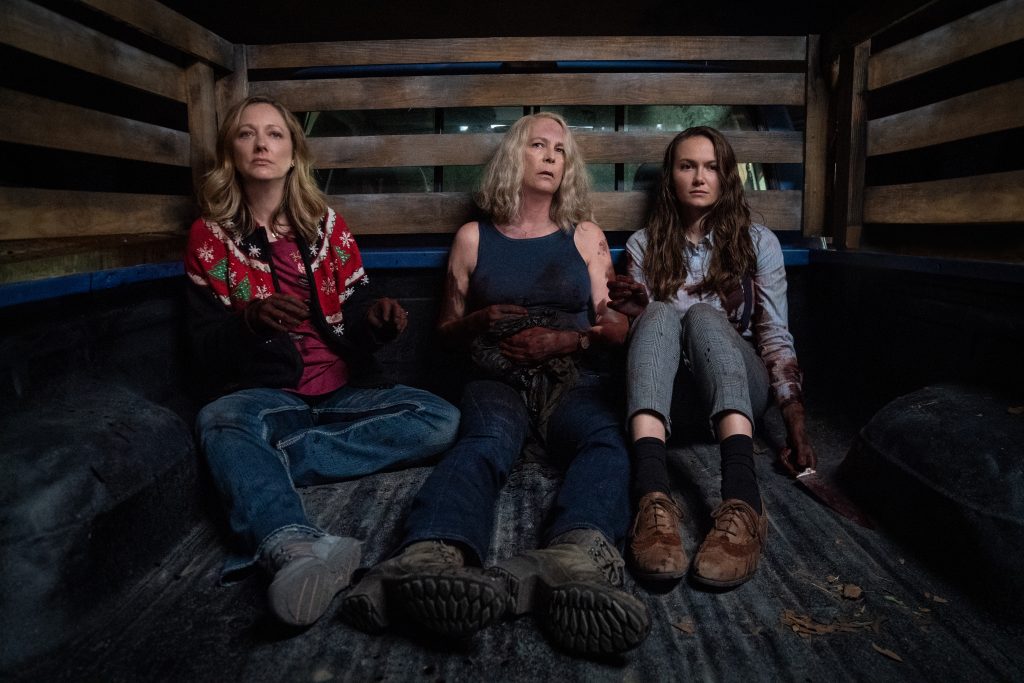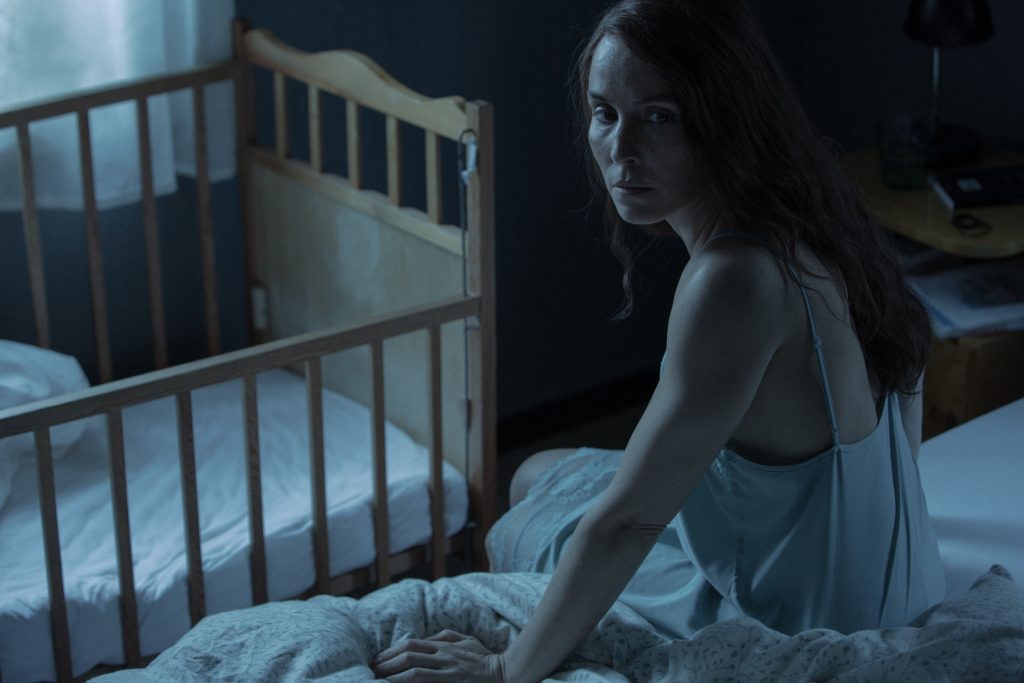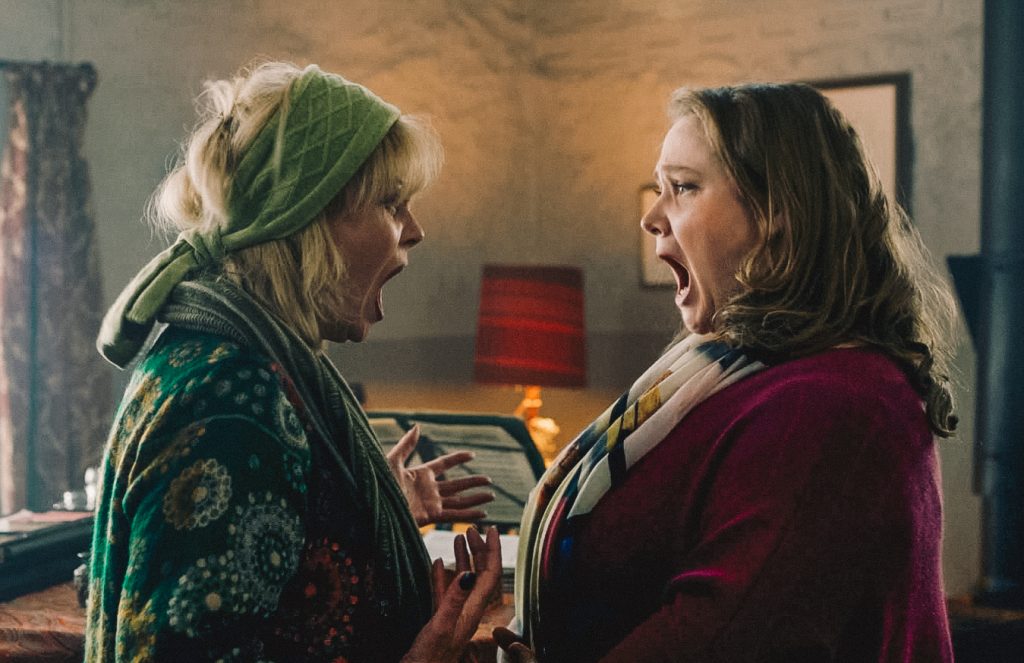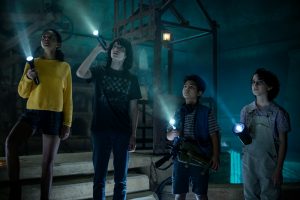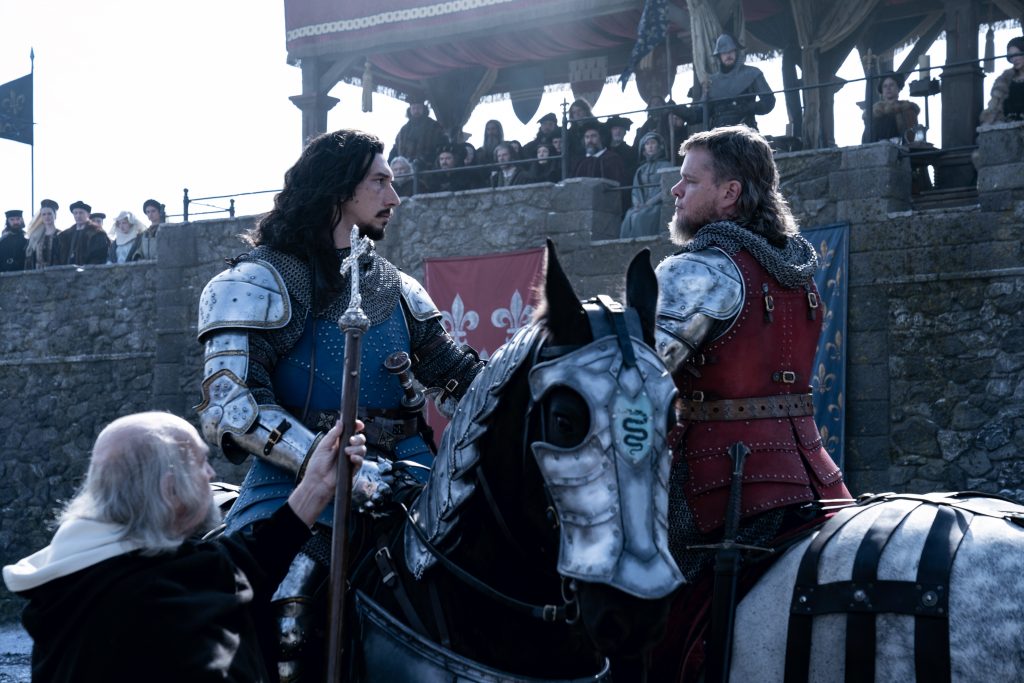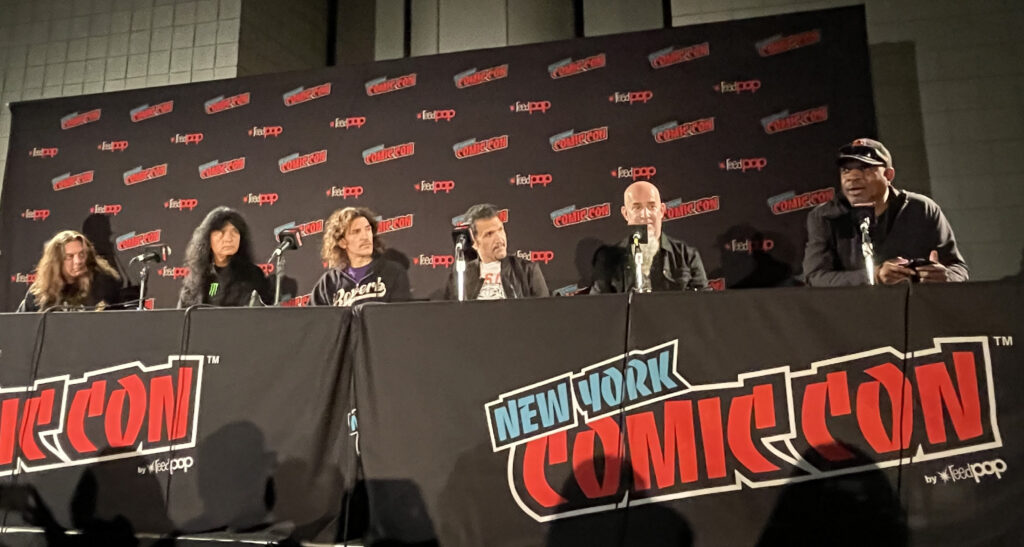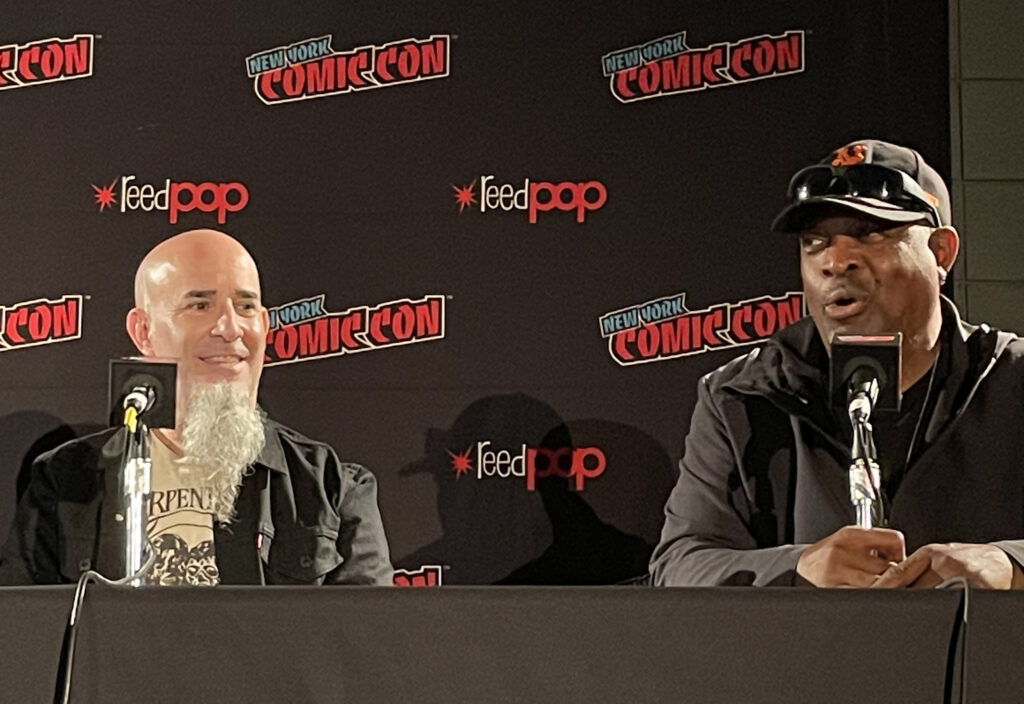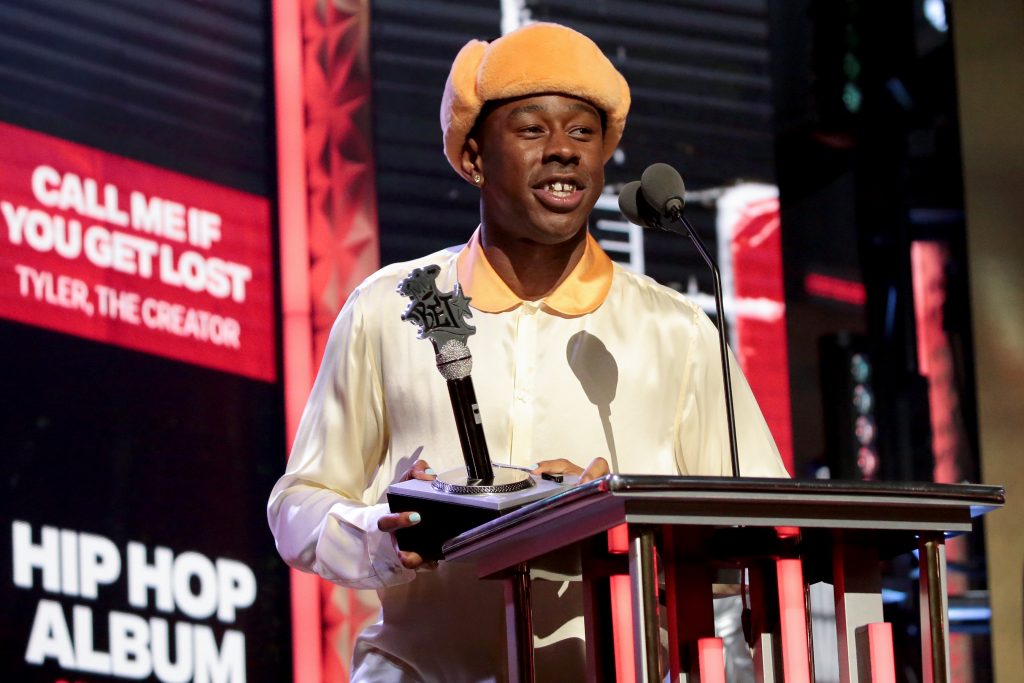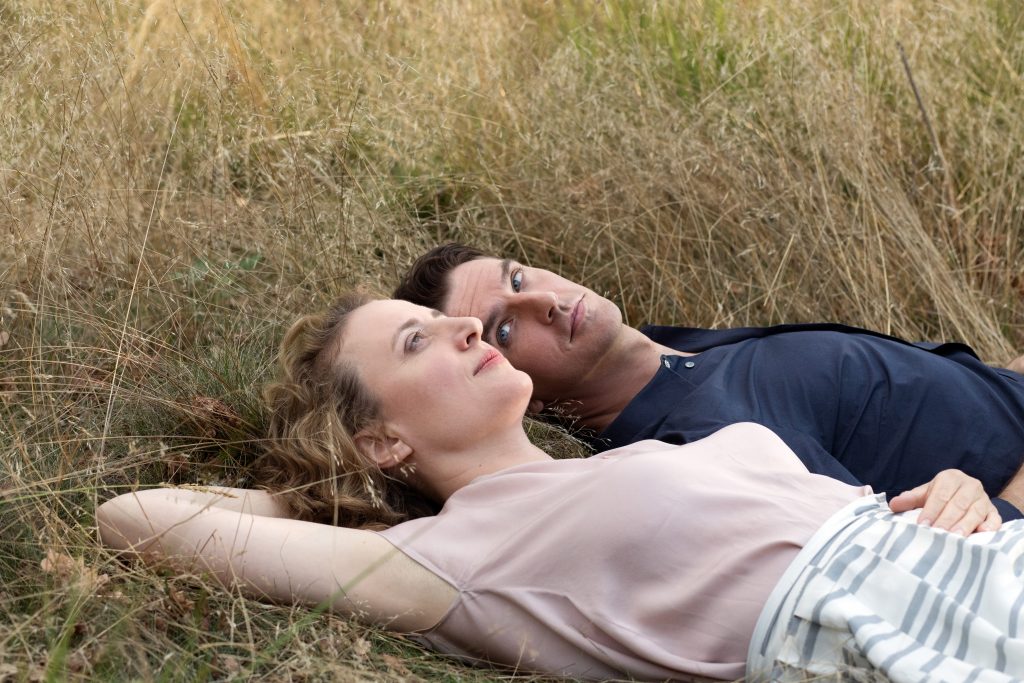October 17, 2021
by Carla Hay

Directed by James Wan
Culture Representation: Taking place in Seattle, the horror flick “Malignant” has a predominantly white cast of characters (with a few African Americans, Asians and Latinos) representing the working-class and middle-class.
Culture Clash: While recovering from an abusive marriage and a pregnancy miscarriage, a woman experiences nightmarish visions and a sinister force that seems to be targeting her for violence.
Culture Audience: “Malignant” will appeal primarily to people who are interested in slightly campy horror movies that are suspenseful and have intriguing twists and turns.
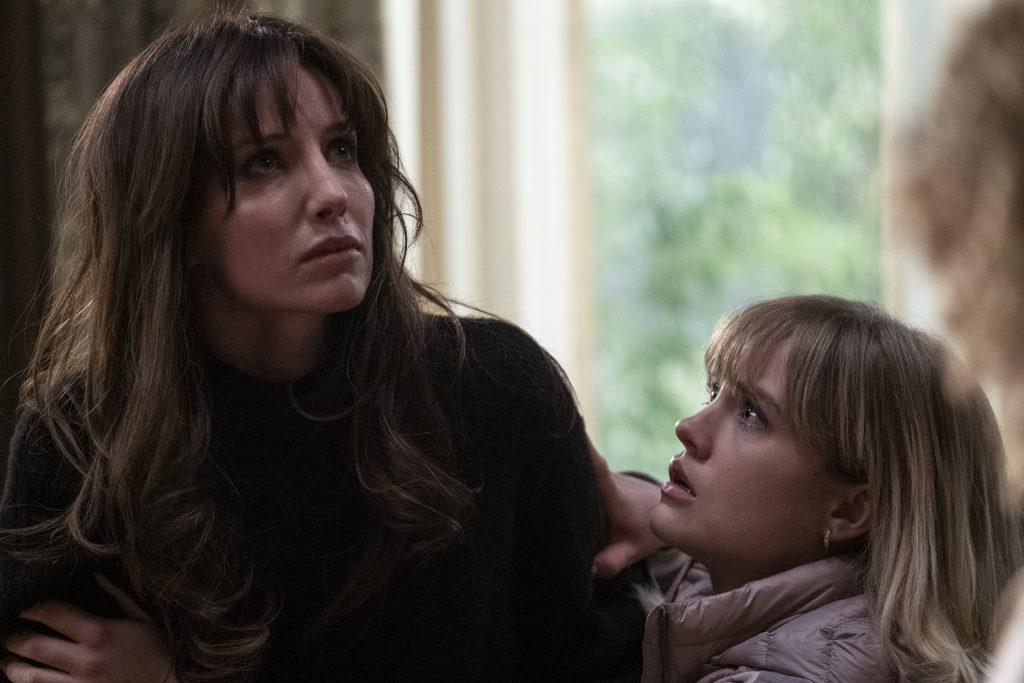
It’s always refreshing when a horror movie fully commits to an absolutely insane twist ending that viewers will either love or hate. “Malignant” doesn’t take itself too seriously, but it’s serious about bringing its own quirky spin to the horror cliché of a woman being menaced by an unknown entity. The movie also has sobering (and possibly triggering) portrayals of domestic violence and pregnancy miscarriage. By the end of the movie, “Malignant” reveals that the concept of a mind playing tricks on someone isn’t limited to just the movie’s protagonist.
Directed by James Wan and written by Akela Cooper, “Malignant” sometimes crosses the line into campy territory when depicting the inevitable murders that happen and frequent hysteria that results from these killings. Wan is a horror master who is best known in horror filmmaking for creating “The Conjuring” universe. It’s a movie franchise that’s straightforward about what’s behind the evil mayhem (it’s a cursed doll named Annabelle) that’s unleashed on the victims in “The Conjuring” and related movies. Wan also co-created with “Saw” horror movie franchise with Leigh Whannell. By contrast, the answers to the mystery aren’t so transparent in “Malignant,” which is an original movie that is not related to the “The Conjuring” and “Saw” franchises.
Annabelle Wallis was the star of 2014’s “Annabelle,” a dull and disappointing prequel to 2013’s “The Conjuring.” In “Annabelle,” which takes primarily in 1955, Wallis had a bland and somewhat forgettable role as a housewife who unwittingly brings home the Annabelle doll. In “Malignant,” Wallis has a much better showcase for her acting talent, in a role that is physically and emotionally more demanding. Wallis takes on the role with admirable and convincing gusto.
In “Malignant,” Wallis is Madison “Maddie” Mitchell, an abused wife who has suffered through several miscarriages. When viewers first see Maddie, she is about seven or eight months pregnant with a baby girl whom she has nicknamed Dumpling. Maddie is an aide at a hospital, where she has continued to work through this late stage in her pregnancy because she had her unemployed husband Derek Mitchell (played by Jake Abel) need the money.
Derek has a mean streak and a violent temper. When Maddie comes home from an exhausting day at work, it doesn’t take long for him to pick a fight with her. He berates her for having had previous miscarriages. Derek gets so angry that he punches Maddie in the abdomen very hard, and the force of the punch makes her hits her head against the wall.
Maddie starts bleeding in the back of the head. Like many abusers, Derek is apologetic about the harm that he caused and he offers to get Maddie some ice to treat her injury. Like many abuse victims, Maddie doesn’t call anyone for help or to report the abuse. She locks herself in a room and sobs about her miserable life.
Later that night, Derek is viciously murdered while he’s sleeping on the living room sofa. Maddie was the only other person who was known to be home at the time, so she immedately falls under suspicion for the murder. She insists that a male intruder committed the murder, and she claims the intruder attacked her. However, Maddie’s description of the intruder is so vague (a black shadowy figure) that police officers investigating the case think that Maddie is lying.
It doesn’t take long for the investigation cops—George Young (played by Kekoa Shaw) and Regina Moss (played by Michole Brianna White)—to find out that Derek was abusing Maddie, thereby giving Maddie a motive to kill him. George is more compassionate to Maddie in the interrogations than Regina is. George is more willing to give Maddie the benefit of the doubt, while Regina is more inclined to think that Maddie is guilty of Derek’s murder.
At various times in the story, Maddie is put under psychiatric evaluation. She has nightmares with visions of other murders that are exactly like murders that end up happening. Because she seems to know too much information, George and Regina have no choice but to put Maddie on the top of their list of possible suspects. One person who completely believes in Maddie’s innocence is her younger sister Sydney Lake (played by Maddie Hasson), who is Maddie’s only real source of support.
Maddie’s head injury mysteriously doesn’t heal. Throughout the story, Maddie notices that the back of her head is bleeding again. And coincidence or not, every time she notices this bleeding, something bad usually happens not long afterward. She also starts to act increasingly unhinged and starts babbling about having an imaginary friend.
The opening scene of “Malignant” indicates that there are dark secrets that will eventually be revealed. This first scene takes place at Simon Research Hospital in Seattle in 1993. Someone named Gabriel has been unleashing an attack on the hospital’s staff. This attack includes causing the electricity to go haywire.
Gabriel is eventually subdued. And under the orders of Dr. Florence Weaver (played by Jacqueline McKenzie), Gabriel is strapped to a chair. “You’ve been a bad, bad boy, Gabriel,” Dr. Weaver scolds him. When Gabriel threatens, “I will kill you all,” Dr. Weaver responds, “It’s time to cut out the cancer.” What Gabriel looks like is shown in this scene, but it won’t be described in this review. It’s enough to say that this scene goes a long way in explaining what’s revealed later in the movie.
“Malignant” is the type of gruesome horror movie that tries to inject some comedy in a tension-filled story. There’s a minor subplot about a young police constable named Winnie (played by Ingrid Bisu), who has a crush on her older co-worker George. Winnie’s eager-to-impress attitude with George is looked at with amusement or pity by jaded co-worker Regina. George keeps his relationship with Winnie strictly professional, but Winnie’s obvious crush on him leads to some comedically awkward moments.
For all of its mystery and suspense, “Malignant” is not without its flaws. There’s a kidnapping and attempted murder that happens to a Seattle Underground tour guide (played by Jean Louisa Kelly), who ends up in a coma in a hospital. However, the movie unrealistically has her listed as a Jane Doe, even though it wouldn’t be that hard for the cops to find out who she is, based on her job and the circumstances under which she was found. It’s a minor plot hole that doesn’t ruin the movie because her identity is eventually discovered.
The big plot twist/reveal at the end of the movie isn’t completely shocking, because there were some big clues along the way. However, it still feels a little too rushed in at the movie’s big climactic scene, without giving viewers enough time to absorb the magnitude of this reveal. That might have been the intention to give the plot twist/reveal a maximum shocking effect. However, the way that this reveal was filmed could have been slightly better.
All of the actors in the cast do perfectly fine jobs in their roles, with Wallis being the obvious standout, even though “Malignant” is not the type of movie that’s going to win awards. However, Wallis skillfully portrays a character whose words and actions make her harder to figure out over time. Viewers will start to wonder how much of Maddie’s visions are real and how much are pure insanity. It’s that mystery—rather than the typical horror movie violence that ensues—that will keep viewers of “Malignant” on edge, because what’s in someone’s mind can be scarier than some bloody murder scenes.
Warner Bros. Pictures released “Malignant” in U.S. cinemas and on HBO Max on September 10, 2021.

